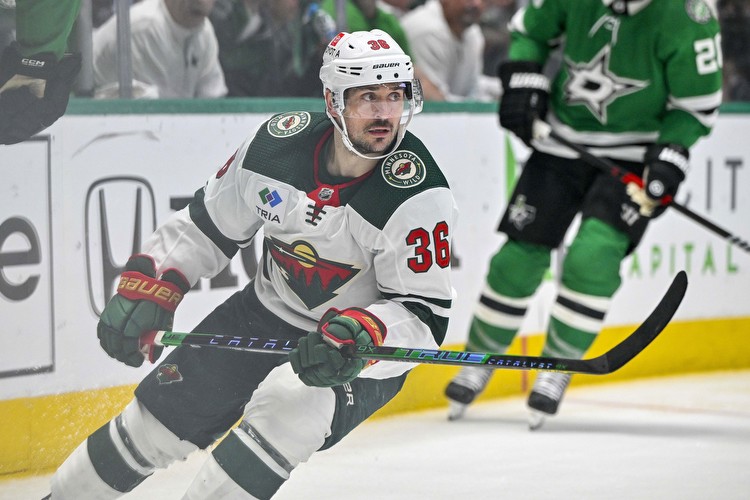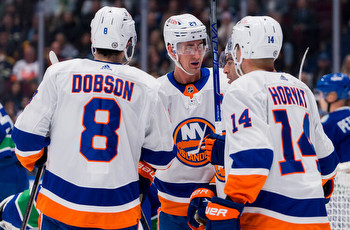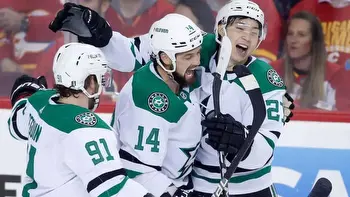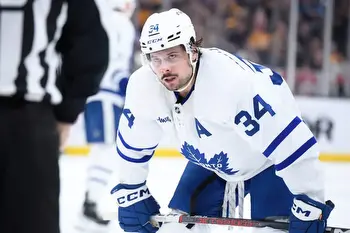Zuccarello Broke the Mold By Signing A Team-Friendly Deal

When Mats Zuccarello pulled up to training camp, he had to know that his career hung in the balance. His position with the team was solid, but he just turned 36 and is playing in a contract year. The NHL isn’t exactly a game for old men. But any uneasiness he may have felt was gone with the stroke of a pen on September 29. For the next two years and seven (or more) months, Zuccarello knows what he’ll be doing.
He’ll be playing hockey for the Minnesota Wild.
For aging players, the job security that comes with term is often more important than the dollar amount they receive. It’s a driving reason why contracts get cheaper as players get older. Sure, declining athleticism is the main factor. Immediately after that factor, though, is a simple truth. Hockey players want to play hockey for as long as possible because they don’t want to do anything else. If it means taking a haircut to guarantee another year, so be it.
Zuccarello’s contract goes a step further than that. He doesn’t just want to play hockey for as long as he can; he doesn't want to play hockey anywhere else. He may be getting older, but playmaking forwards can command a strong price as late into their careers as they want, so long as they produce. Zuccarello is a shoo-in for the power play and the top line across from Kirill Kaprizov, so production shouldn't be an issue. Despite that, he and his agent agreed to a contract that public analytical models find overwhelmingly favorable to the team.
Dom Luszczyszyn’s (The Athletic) analytical models, which produced the card above, is optimistic about Zuccarello's future. It uses a blend of advanced analytics, traditional stats, and aging curves to project every NHL player's contributions to his team. Even after factoring in a steady (and predictable) reduction in offensive contribution, the model predicts a 66% chance that Zucarrello will provide more value than his salary cap hit would suggest.
Luszczyszyn used the same model this summer to project the efficiency of every contract across the league. Based on this information and a lot of research on CapFriendly.com, we can break down how Zuccarello’s contract stacks up against similar late-30s deals across the league.
First, note that when teams hand out contracts to players in their 30s, they nearly always pay the player above the market rate for their on-ice impact. There are two main reasons for this:
- Teams are willing to pay extra for a locker room leader, betting that it improves the entire team’s on-ice product
- The CBA suppresses pay for younger players, leaving extra cap space in the market, which teams have to spend elsewhere.
The league is littered with contracts with a face value higher than the player’s projected on-ice value per Luszczyszyn’s model -- “the over-pays.” Among players 34 and older, these include the likes of Alex Ovechkin ($9.5 million AAV over three remaining seasons), Alex Killorn ($6.25 million over four years), Jordan Staal ($2.9 million over four years), and Evgenii Dadonov (2.25 million for the next two years).
Some of these deals are fine -- Staal and Dadonov, for example, have a reasonable chance to remain positive over the length of the contracts, even if it's not the most likely outcome. Those deals makes sense, given that the Carolina Hurricanes and Dallas Stars are competing now. They are squeezing the most out of this season and will deal with the consequences later. Other deals, such as Ovechkin's, Jeff Carter’s ($3.25 million in the last year of his deal), and Cal Clutterbuck's ($1.75 million this season), have already exhausted the good part of their life span and are now in the ugly stages.
Compare that to the league’s most team-friendly deals with a similar AAV to Zuccarello’s:
Note the Stanley Cup odds at the time of this writing are for these teams.
- Colorado is 8:1
- Dallas is 13:1
- Boston is 17:1
- Edmonton is 11:1
- Toronto is 11:1
Vegas has Minnesota listed at thirty-to-one. Those odds are two or three times as long as the other teams getting “sweetheart” deals from aging vets.
Aside from these nine contracts, Claude Giroux, David Perron, and Max Pacioretty are the only ones comparable to Zuccarello’s. The Ottawa Senators, Detroit Red Wings, and Washington Capitals all have longer odds than Minnesota, but these veterans signed short deals with favorable AAV anyway.
These four deals stand apart from the other positive-value contracts around the NHL. They didn’t sign them during restricted free agency, like Matt Boldy or Joel Eriksson Ek. They also weren’t signed by a player in his 20s jumping at his first chance for life-changing money, like Jake Middleton. They are relatively short deals, so they aren’t trading dollars for term. Unlike the nine sweetheart deals above, the team they signed with had average or below-average Stanley Cup odds. So, what do they have in common?
In short, these teams have fun teammates to play with. Giroux will go home to his native Ontario and play with up-and-coming talents Tim Stutzle and Brady Tkachuk. Perron seems to be betting on Detroit’s “Yzer-plan,” with a chance to play with Alex DeBrincat and Dylan Larkin. Both of these teams also have impressive management, with whispers of an opening cup window. Pacioretty? He gets a chance to play with Ovi and contribute to what could be the greatest goal-scoring career in history.
Taking all of this together, Zuccarello’s contract says a lot about how players feel about Minnesota’s clubhouse. The excitement created by players as good as Kirill Kaprizov simply can’t be overstated. Zuccy wants to be a part of this team so badly that he’s willing to tie the end of his career to it and take a pay cut. If he’s right, the State of Hockey is in for a treat this season.



































